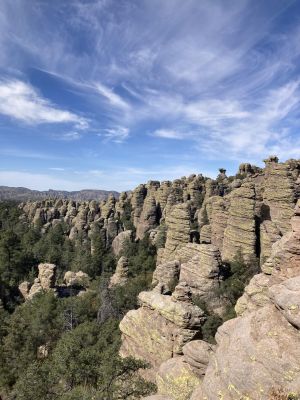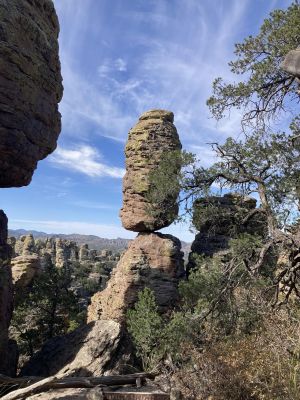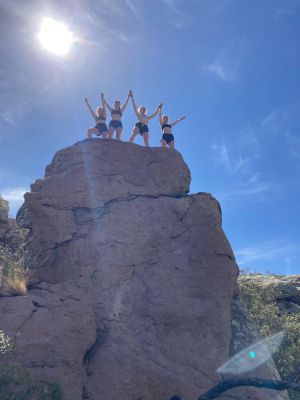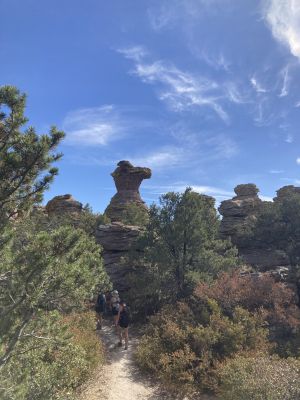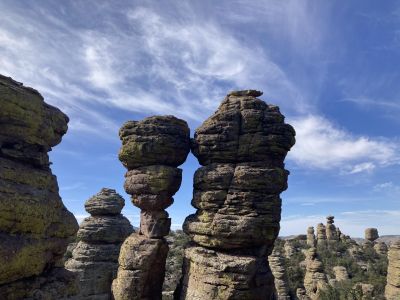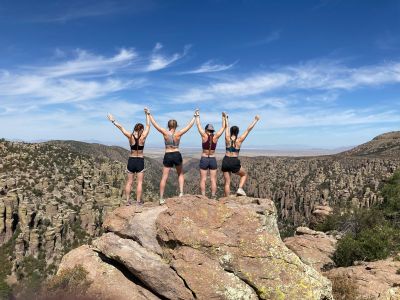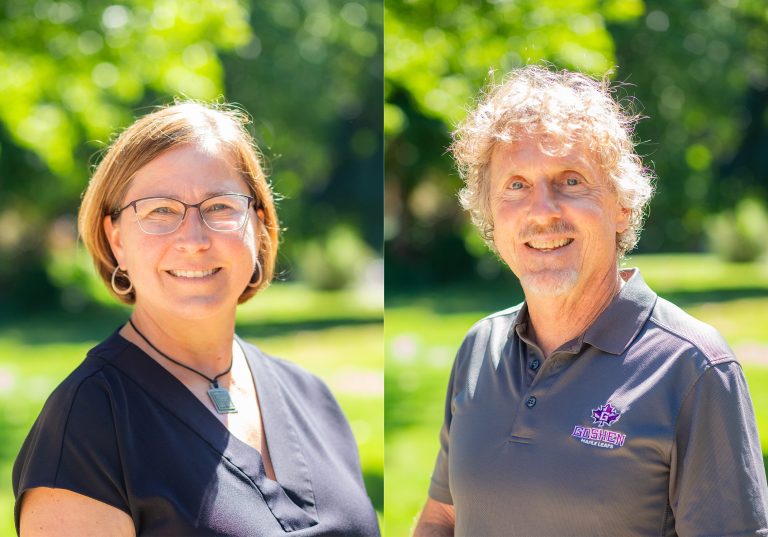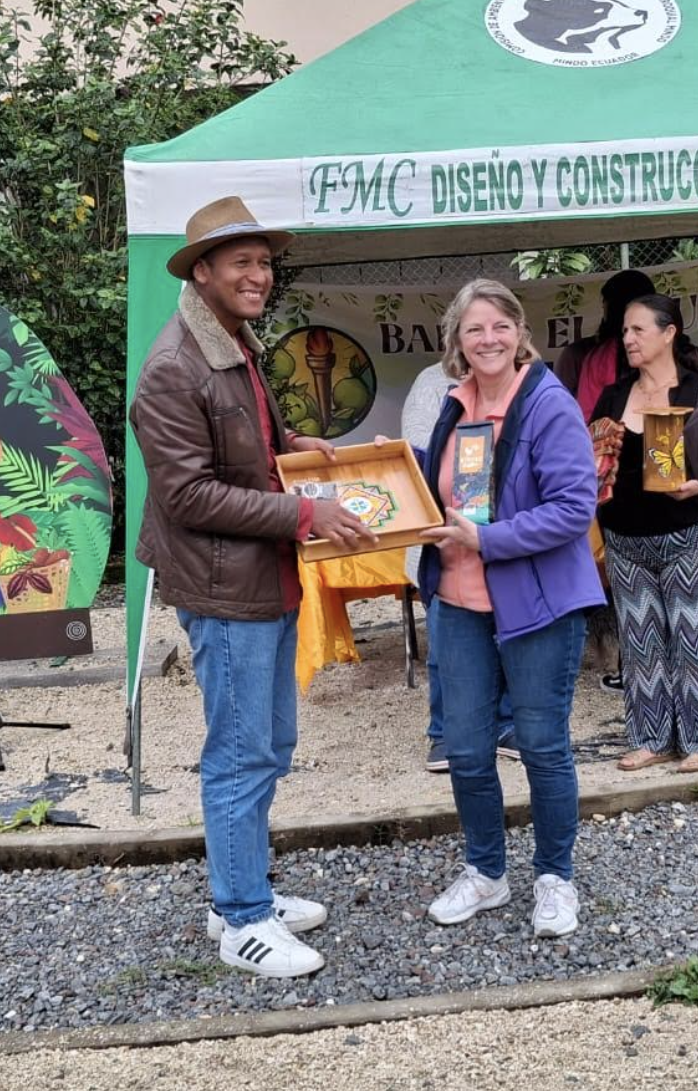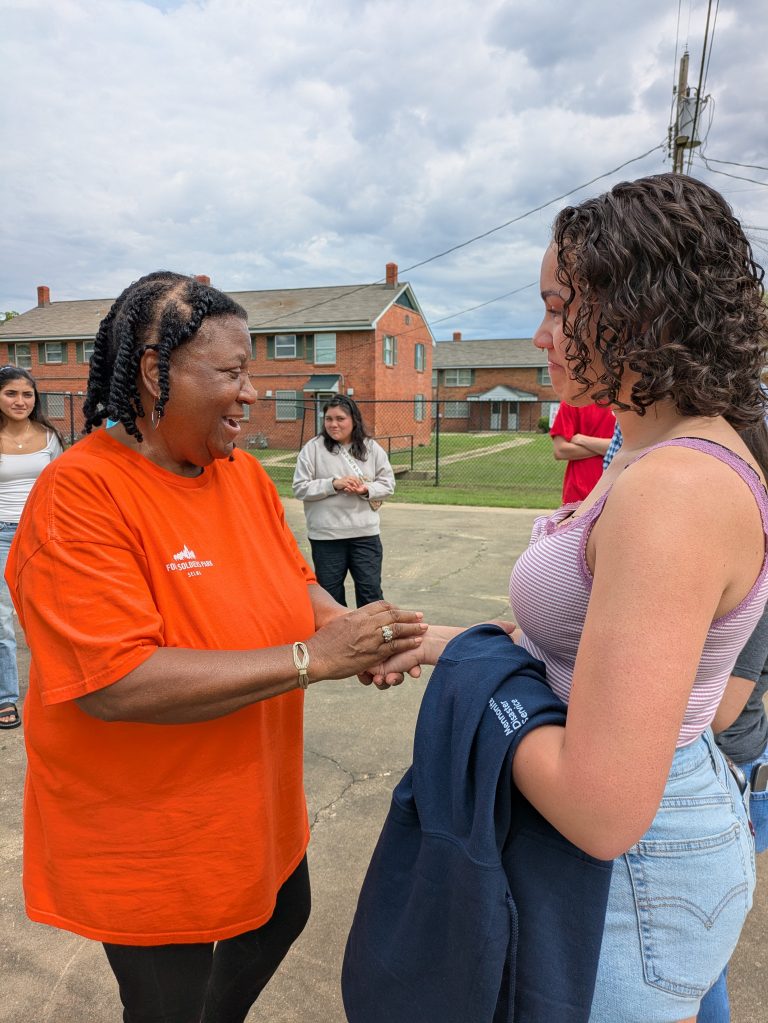Goshen College’s “SST for all” makes global education more accessible with flexible study options at home and abroad.
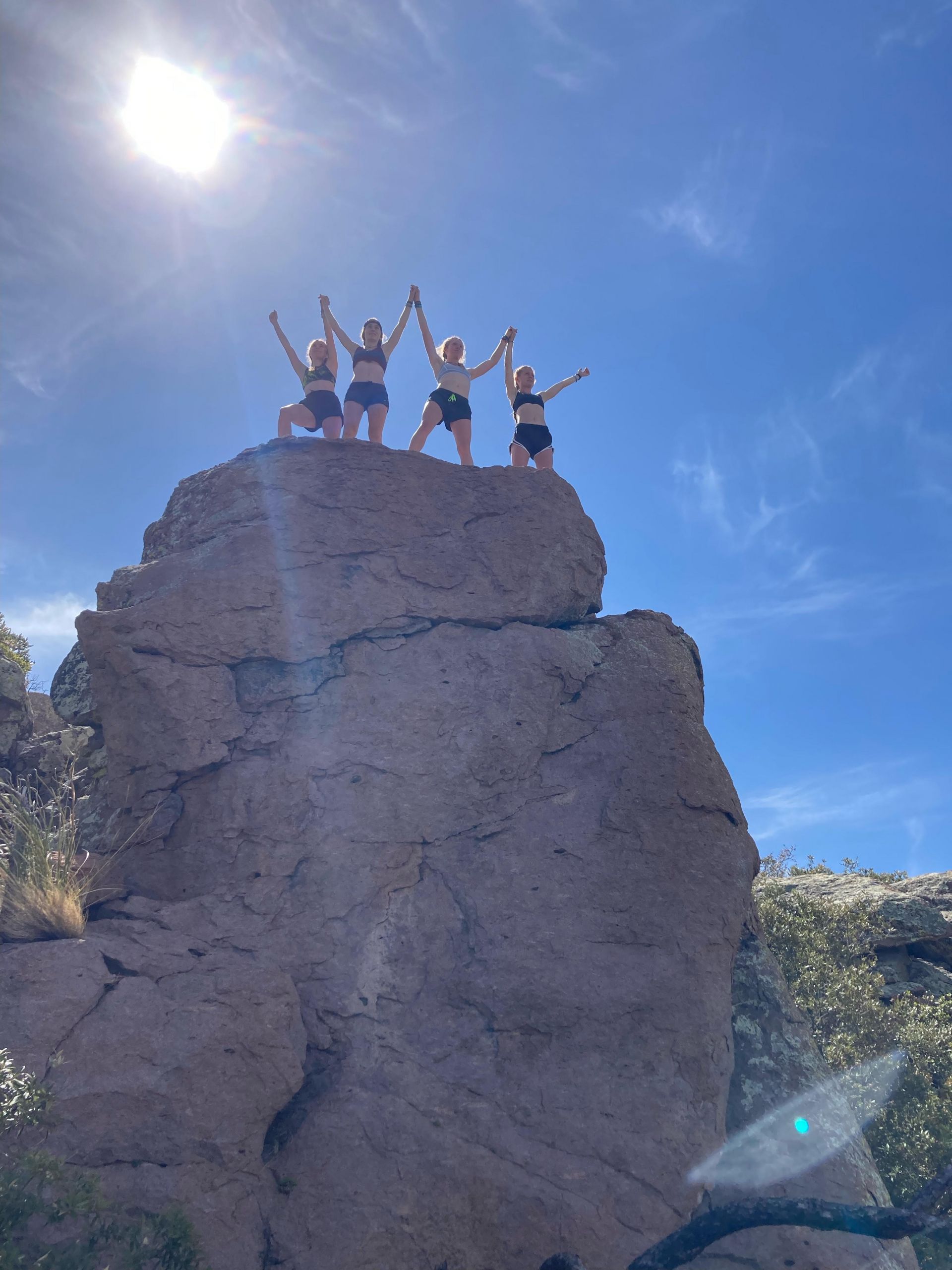
News
Adventure in the Chiricahua National Monument
Jun 21 2022
In this post, Summer Cooper recounts her time among the Hoodoo rock formations in the foothills of the Chiricahua Mountains:
“While in Arizona we camped at the Chiricahua National Monument. We were able to see different animals, learn the history of the monument, and do a 13.4-mile hike.
While there I took notice of the standing rocks. These rocks are known as pinnacles, which are layers of gray rock called rhyolite. We were able to see a lot of these on the hike.
The way they were able to balance on each other was absolutely stunning. I had to stop and stare while we were hiking.
I also found Arizona white-tailed deer, Coatimundi, and Mexican jays. I saw three deer up close while I was hiking up a mountain to see the sunset. These deer were calm and very comfortable with us being so close. When entering the monument, a Coatimundi came up close to us. It looked like a skunk, but its tail was very long. This made the animal very distinguishable. In the mornings, we saw Mexican jays fly by as we were jogging through the trails. This was such a pretty and peaceful sight. When walking you would also hear the cicadas chirping through the trees. The Chiricahua Monument has their own species of cicadas that come out every 17 years. This is the year they came out.
The hike toward the end of our trip took a little over a half marathon to finish. This was the longest hike that I have ever been on! A trail that was the prettiest to me was Inspiration Point.
We were able to see from over 6,000 feet above sea level on this trail. We signed a notebook at Inspiration Point to show that we traveled to the top.
I also enjoyed seeing different types of rocks, like Camel Rock and Kissing Rocks.
They were shaped so perfectly and looked like the objects they were named after. We also were able to see animal scat, or excrement, which was very interesting. Getting to travel up the mountain was an adventure. It was so amazing to look down at all of the mountains we climbed up to get to the point we were at.
This experience helped me learn to slow down more. Once I slowed down, I was able to see such beautiful sights and feel more connected with the Earth. It’s so easy to rush quickly up a hill and miss all the beautiful rocks and sights on the way up.
I also learned about how we impact the environment. When we were hiking up the mountains it was really alarming how many “please don’t start a fire” signs were up. Parts of the mountain you could also see were burnt from fires in the past. This experience has taught me that I need to be more aware of the environment and the impact we have on it. There is so much natural beauty here, and we need to take care of it and love it.”
